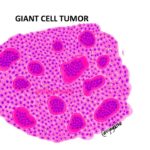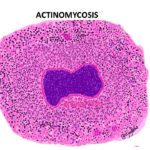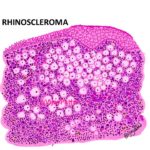ACUTE RHEUMATIC FEVER
Acute rheumatic fever is an acute post streptococcal immune mediated multisystem inflammatory disease. It occurs 2 to 6 weeks after an episode of group A streptococcal pharyngitis. The disease occurs
Read MoreSEMINOMA- TESTIS
Seminomas are the most common testicular germ cell tumors accounting to around 50 % of the germ cell tumors. Seminomas are are histologically identical to ovarian dysgerminomas and germinomas, which
Read MoreGIANT CELL TUMOR- BONE
GIANT CELL TUMOR- BONE Giant cell tumor (GCT) also referred to as osteoclastoma is a locally aggressive neoplasm characterized by large numbers of osteoclast-type giant cells, uniformly distributed in
Read MoreTUBERCULOUS LYMPHADENITIS
It is a chronic granulomatous inflammation of the lymph node with the presence of caseation necrosis. It is caused by infection with Mycobacterium tuberculosis. It is one of the most common
Read MoreCHRONIC VENOUS CONGESTION – LUNG
Congestion Versus Hyperemia Congestion: it is a passive process which results due to impaired outflow of venous blood from a tissue Should not be confused with hyperemia. Hyperemia is an active
Read MoreACTINOMYCOSIS
Actinomycosis is a chronic, suppurative granulomatous inflammation caused by Actinomyces israelli. Actinomyces israelli is a filamentous gram positive organism of genus Actinobacteria. It is a normal
Read MoreRHINOSCLEROMA
Rhinoscleroma is an infectious chronic granulomatous disease of the upper respiratory tract caused by Klebsiella. rhinoscleromatis. Klebsiella rhinoscleromatis is an immotile, short, encapsulated,
Read MoreRHINOSPORIDIOSIS
Rhinospoiridiosis It is a chronic granulomatous disease caused by Rhinosporidium seeberi which belong to class Mesomycetozoea . Mesomycetozoea, are new group of microorganisms which lie in between
Read More







